What types of floor coverings are there + analysis of their advantages and disadvantages
As for the walls, ceilings, they can be updated at least every year, adding variety to the interior. But the flooring is a completely different issue, this is an important decision, because durability, aesthetic appearance, and the installation method depend on the material. Today, the range is surprising, because it is extremely multifaceted, and the list is constantly updated. The types of floor coverings are mainly classified depending on the way the elements are divided. It can be ceramic tiles, parquet, solid wood, laminate, roll materials, stone slabs (porcelain tiles), as well as the familiar linoleum. No less popular and seamless, that is, bulk floors.
Content
Solid wood floor
This material means a grooved board made of natural wood. Often it is used in the design of classic interiors - the emphasis is on naturalness and naturalness. This floor captivates the eye with a noble texture and surface, pleasant to the touch.
A massive board can be called a long-lived, since the technology of drying wood, as well as modern equipment determines the long life. On sale there is a board coated with varnish or oil, or without coating.
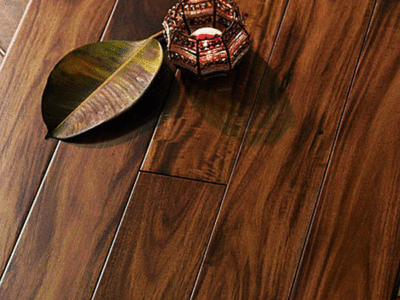
It should also be noted that the massive board at the edges has a micro bevel. The secret is that it is wider than a parquet board, and this leads to a large amount of deformation. The micro-chamfer visually hides cracks formed after deformation.
Massive board is an excellent floor material, only it is exposed to moisture, and also requires coating with a protective compound. Some buyers are confused by the high price of a massive board - this is not surprising, because it is made from soft breeds, including exotic trees.
Important: at the present time, a specific floorboard imitating an array, the so-called engineering, is gaining relevance. The bottom line is that its bottom layer is made of plywood, according to manufacturers, it is less deformed.
Laminate - a kind of parquet simulator
Indeed, in external characteristics it resembles parquet, but these floor coverings completely different. Laminate is an artificial coating made of HDF boards: a decorative polymer layer and a protective film are applied to the surface. It is the polymer layer that is responsible for the nature of the pattern, and the texture can imitate wood, marble, patterns.
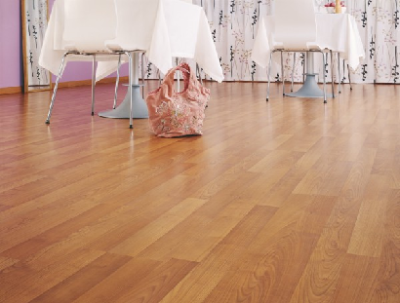
The main advantage of the laminate is its good hardness: fractions of natural corundum, that is, ultra-strong material that is used in diamond cutting, are added to the composition of the resins. It is also easy to care for, because most of the contaminants (paint, grease and the like) are excellently removed by solvents, detergents.
Important: with the correct use of cleaning products, the decorative qualities of the laminate do not suffer.
The advantages include impact resistance, incombustibility, easy installation, and abrasion resistance. The laminate is not afraid of dog claws, ladies' hairpins, and you can lay it in the bedroom, in the nursery. Significant disadvantages are low sound absorption, the inability to use it in a room with high humidity and, of course, this is an artificial material.
Can't choose flooring for your apartment? We will tell you about the various options and help determine our review of materials:https://floor.techinfus.com/en/dizain/kakoj-pol-luchshe-v-dome-i-kvartire-i-pochemu.html.
Stone floor
Today, stone floors are widely used in residential premises, especially they are popular in hot countries, since the stone has a specific property - it “cools”. This feature is due to the high thermal conductivity of the material.
Stone flooring can be made of natural stone and artificial substitutes. Stone flooring is mainly used in hallways, bathrooms, and kitchens. This fact is associated with excellent wear resistance. Cleaning is also greatly simplified, and the stone is resistant to aggressive environments.
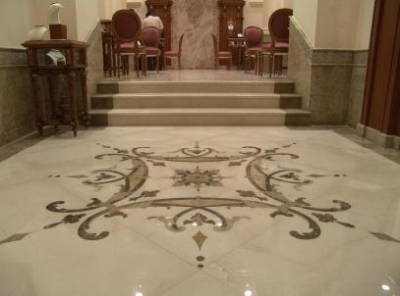
Honestly, the coating of granite, marble, natural stone in our country can not boast of widespread use. There are two reasons for this, namely, the high cost of pleasure and the cold factor, because many, on the contrary, are trying with all their might to insulate the floor. Although, this issue is completely solved - the installation of the "warm floor" system.
Linoleum - the most common economical option
Undoubtedly, linoleum can be called an inexpensive floor material, which is equally successfully used for flooring in any room - the range of applications is quite wide.

Very often choose from two popular coatings - laminate or linoleum. Compare the characteristics of both materials and talk about the advantages and disadvantages in the article:https://floor.techinfus.com/en/pol-pokritiya/laminat-ili-linoleum-kakoe-pokrytie-luchshe-sravnenie-xarakteristik.html.
Linoleum is a rolled polymer material, easy to use and future care. To date, there are two options for this flooring: household and commercial. Of course, the latter should be characterized by good wear resistance due to high traffic.
Household linoleum, used in private homes, has a layered structure. A durable top layer, a color layer with a variety of decor, the third is fiberglass, it prevents deformation, while maintaining the specified parameters. The final layer guarantees a flat surface, sound insulation. This is foamed PVC.
Important: unfortunately, many manufacturers ignore the presence of a layer with fiberglass, so the performance of linoleum is sharply reduced.
Bulk floor - a modern solution
In fact, the self-leveling floor is poured onto any foundation, leveled and as a result, a perfectly flat, smooth seamless surface is obtained. And since polymers are artificial materials, the color scheme of flooring is beautiful and multifaceted. In addition, the use of innovative technologies makes it possible to obtain a multi-colored surface, and this looks very original.
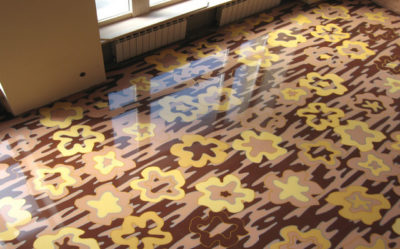
A high-quality polymer floor is characterized by high parameters of durability, it withstands chemical attack, does not support the vital activity of bacteria, and it is also waterproof. And the disadvantages include laborious work to prepare the foundation.
Art flooring
Art parquet must be distinguished in a separate type of flooring due to the excellent aesthetic perception. Indeed, it is not for nothing that this type of coating was often used in chic palace chambers. Therefore, traditions have been preserved to this day.
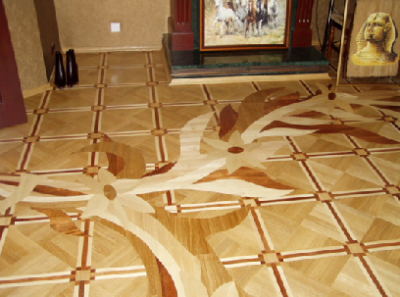
In the bedroom we spend a lot of time and many want to make the perfect floor there. You can read about different floor coverings for a bedroom in the material:https://floor.techinfus.com/en/dizain/pol-v-spalne.html.
Almost all types of flooring are used for the production of art parquet: this includes piece and panel parquet, a modification of mosaic parquet. Plus, art flooring is combined with a massive board.
Depending on the manufacturing method, art parquet is distinguished:
- with rectilinear geometry. Production of piece parquet mechanically;
- with curved geometry - the use of laser technology for cutting wood. This type of parquet is made in specialized workshops from pieces of wood, from piece parquet. Elements are assembled on the floor, directly at the facility. The method is called marquetry;
- with straight and curved geometry - mechanical or laser cutting technology. Subsequently, the elements cut into the parquet floor using electric milling machines. This method is known as intarsia.
Interesting! There are even generally accepted names for art parquet: “wicker”, “Renault”, “Pavlovskaya wicker”.
Flooring may be different, the specific choice depends on the type of premises, personal preferences, availability of funds.

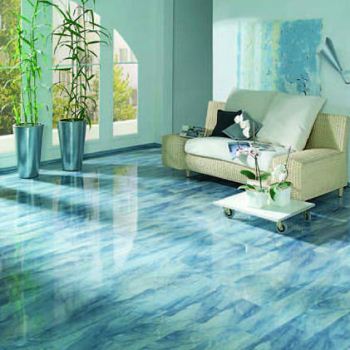


3 comments